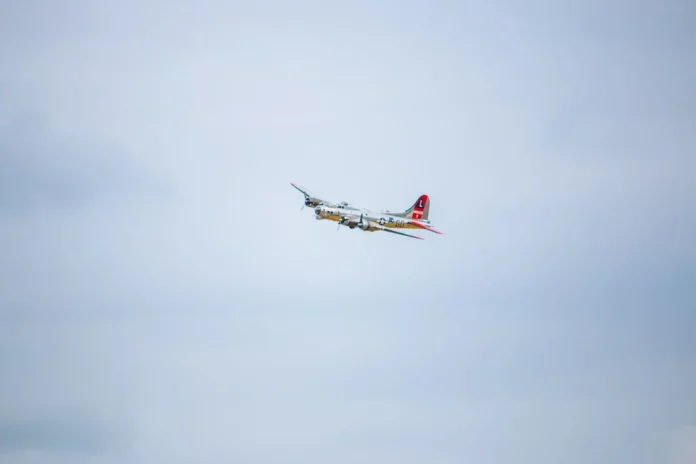Regulatory Takeoff Weight (RTOW) is a crucial term in the field of aviation. It refers to the maximum weight at which an aircraft is allowed to take off, as specified by the relevant regulatory authorities. RTOW takes various factors into account, including the type of aircraft, weather conditions, runway length, and other operational considerations. It plays a vital role in ensuring the safety and efficiency of flights by defining the limits within which an aircraft can safely operate during takeoff.
Contents
The Importance of Regulatory Takeoff Weight
Regulatory takeoff weight is critical for maintaining the safety and performance of an aircraft during the takeoff phase. It is essential to determine the maximum weight an aircraft can carry to ensure safe and successful takeoffs. The RTOW limit takes into account a range of factors, including the aircraft’s structural limits, engine power, and braking capabilities.
The regulatory authorities, such as the Federal Aviation Administration (FAA) in the United States, thoroughly evaluate and establish these limits to protect against any potential dangers associated with overloaded or improperly loaded aircraft. Compliance with RTOW regulations is mandatory for all pilots and airline operators to ensure the safety of passengers and crew members.
To comply with the RTOW regulations, pilots and operators need to accurately calculate and determine the weight of the aircraft, taking into account various parameters. These parameters usually include:
- The weight of the aircraft itself, including fuel, passengers, cargo, and equipment.
- Weather conditions, such as temperature, pressure altitude, wind speed and direction, and runway conditions.
- Aviation regulations and certifications specific to the aircraft type and operator.
- The runway length available for takeoff.
- The aircraft’s performance, including engine thrust, wing design, and aerodynamic capabilities.
By considering these factors, pilots and operators can calculate the RTOW and determine whether the aircraft is within the permissible limits for takeoff.
Calculating Regulatory Takeoff Weight
Calculating the regulatory takeoff weight involves several steps and considerations. While the specific calculations may vary depending on the aircraft and regulations, the general process includes:
1. Determining the Basic Empty Weight (BEW)
Basic Empty Weight refers to the weight of the aircraft when it is in a completely empty state, including the structure, systems, and any permanently attached equipment. This weight is typically provided by the aircraft manufacturer and is an essential starting point to calculate the RTOW.
2. Adding Fuel Weight
The next step involves adding the weight of the fuel required for the flight. The amount of fuel can vary depending on the planned route, alternate airports, and contingency fuel requirements. The exact fuel weight is calculated using specific fuel consumption rates provided by the aircraft manufacturer and considering any regulatory requirements for minimum fuel reserves.
3. Accounting for Passengers, Cargo, and Equipment
The weight of passengers, cargo, and equipment on board the aircraft also needs to be factored into the RTOW calculation. This includes the weight of the passengers, their baggage, any cargo being carried, and any equipment or supplies required for the flight. The total weight of these items must be within the limits specified by the RTOW regulations.
4. Evaluating Environmental Factors and Performance Limitations
The RTOW calculation also considers environmental factors and performance limitations. This includes assessing the impact of air temperature, altitude, wind conditions, and runway length. Warmer temperatures, higher altitudes, strong headwinds, and shorter runways can all affect the aircraft’s performance, potentially reducing its maximum takeoff weight. It is crucial to account for these factors to ensure a safe takeoff.
5. Cross-Checking and Verifying Calculations
Once all the necessary weight calculations have been completed, pilots and operators cross-check and verify their calculations to ensure accuracy. This may involve using sophisticated computer software or specific aircraft performance charts provided by the manufacturer. The goal is to ensure that the aircraft’s actual weight, environmental conditions, and performance capabilities align with the maximum weight specified by the RTOW regulations.
The Consequences of Ignoring Regulatory Takeoff Weight
Ignoring or miscalculating the regulatory takeoff weight can have serious consequences. If an aircraft exceeds its RTOW limitation, several potential issues can arise:
- Reduced maneuverability and control during takeoff.
- Increased takeoff distance, potentially exceeding the available runway length.
- Reduced climb performance, which can compromise obstacle clearance requirements.
- Inadequate engine thrust and braking capabilities to handle the excess weight.
- Potential damage to the aircraft’s structure or systems due to excessive stress.
- Increased risks during emergencies or abnormal situations, such as engine failures.
- Violation of aviation regulations, leading to legal and operational consequences.
To avoid these risks and ensure safe aircraft operations, compliance with the regulatory takeoff weight is crucial. It is the responsibility of pilots and operators to accurately calculate, verify, and adhere to the specified RTOW limits.
Conclusion
Regulatory Takeoff Weight (RTOW) is a vital consideration in aviation, determining the maximum weight an aircraft can safely take off. Compliance with RTOW regulations is essential to ensure the safety of passengers, crew members, and the aircraft itself. Calculating the RTOW involves carefully considering factors such as the aircraft’s weight, fuel, passengers, cargo, environmental factors, and performance limitations. Ignoring or miscalculating the RTOW can lead to severe consequences, including compromised maneuverability, increased takeoff distance, reduced climb performance, and violation of aviation regulations.
Pilots and operators must understand and adhere to the RTOW limits to ensure the safe and efficient operation of aircraft during takeoff. By following proper procedures and accurately calculating the RTOW, aviation professionals play a crucial role in maintaining the highest standards of safety in the industry.
For More: What is AFTN in Aviation? (Aeronautical Fixed Telecommunication Network)




